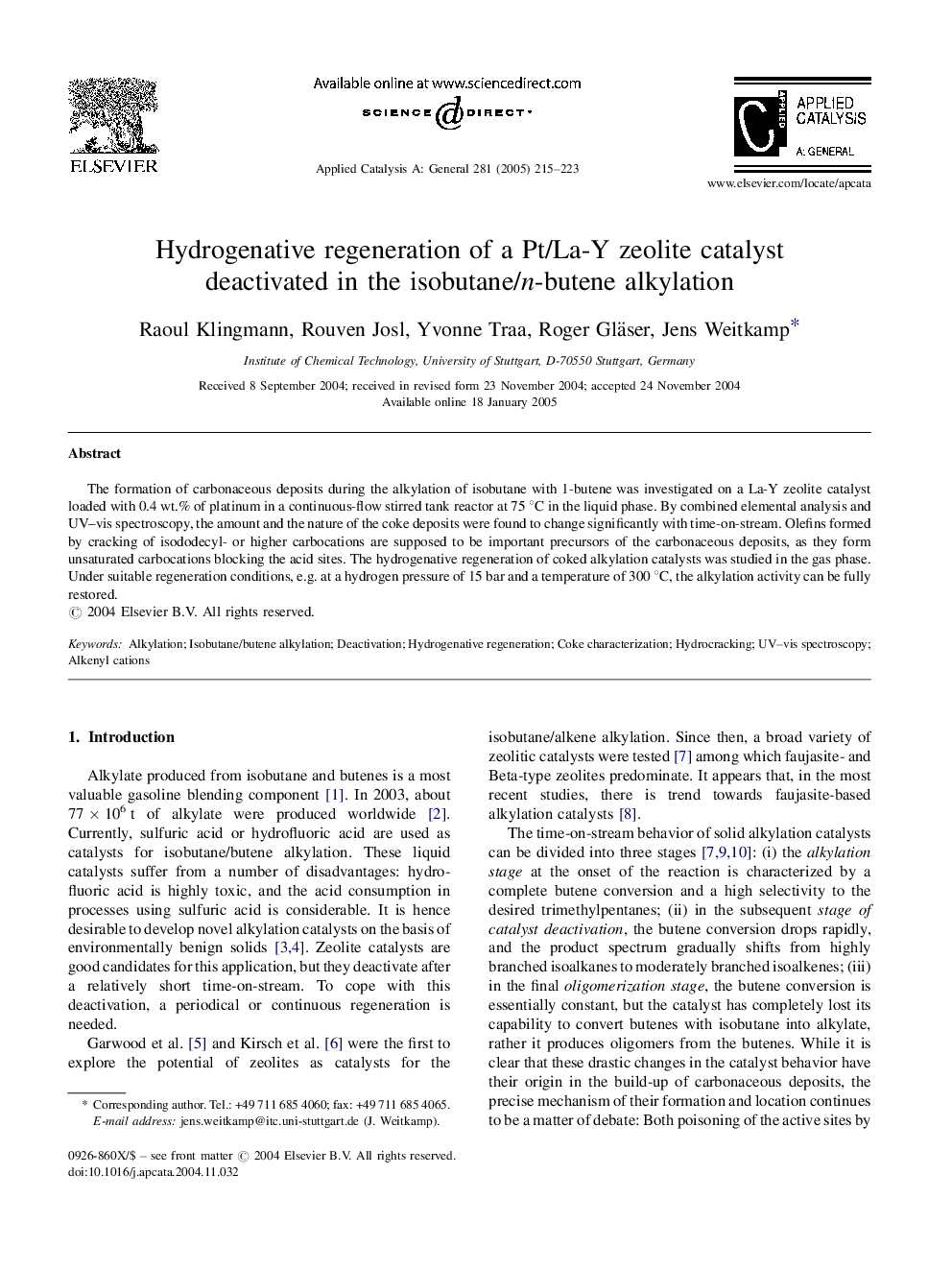| Article ID | Journal | Published Year | Pages | File Type |
|---|---|---|---|---|
| 9608099 | Applied Catalysis A: General | 2005 | 9 Pages |
Abstract
The formation of carbonaceous deposits during the alkylation of isobutane with 1-butene was investigated on a La-Y zeolite catalyst loaded with 0.4 wt.% of platinum in a continuous-flow stirred tank reactor at 75 °C in the liquid phase. By combined elemental analysis and UV-vis spectroscopy, the amount and the nature of the coke deposits were found to change significantly with time-on-stream. Olefins formed by cracking of isododecyl- or higher carbocations are supposed to be important precursors of the carbonaceous deposits, as they form unsaturated carbocations blocking the acid sites. The hydrogenative regeneration of coked alkylation catalysts was studied in the gas phase. Under suitable regeneration conditions, e.g. at a hydrogen pressure of 15 bar and a temperature of 300 °C, the alkylation activity can be fully restored.
Keywords
Related Topics
Physical Sciences and Engineering
Chemical Engineering
Catalysis
Authors
Raoul Klingmann, Rouven Josl, Yvonne Traa, Roger Gläser, Jens Weitkamp,
